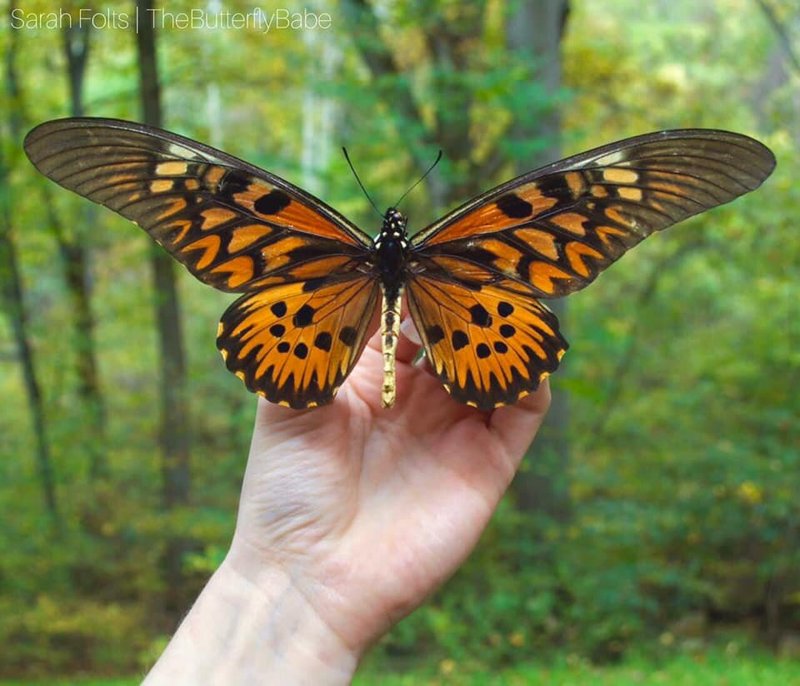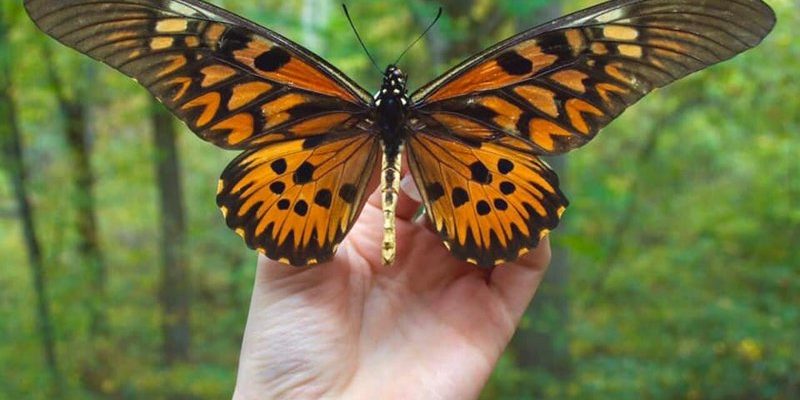
Imagine sipping coffee with a friend as you watch these beautiful insects dance from flower to flower. You might wonder about their habits and habits—and whether they can harm you in any way. In this article, we’ll dive into the world of swallowtail butterflies, exploring their characteristics, behavior, and any myths surrounding their danger to humans.
What Are Swallowtail Butterflies?
Swallowtail butterflies belong to the family Papilionidae, with over 500 species worldwide. They’re often easy to identify thanks to their vibrant colors and distinct tail-like extensions on their hindwings, which resemble a swallow’s tail. These butterflies typically range from medium to large in size, making them somewhat impressive to spot while you’re out in nature.
These butterflies have a fascinating life cycle that includes four stages: egg, larva (caterpillar), pupa (chrysalis), and adult butterfly. As caterpillars, they often feed on the leaves of host plants, like parsley or citrus trees. Swallowtails can be spotted in gardens and parks where their favorite plants grow. They flit about in search of nectar-rich flowers, bringing joy to anyone lucky enough to observe them.
Are Swallowtail Butterflies Poisonous?
You might be wondering if swallowtail butterflies carry any poison that could harm humans. The short answer? Not at all. Swallowtails themselves aren’t toxic to humans. However, some species have developed a clever defense mechanism. Their caterpillars can sequester toxins from the plants they consume, which makes them distasteful to predators.
For example, the Eastern Tiger Swallowtail caterpillar feeds on plants like cherry and tulip tree, which contain chemicals that can deter hungry birds. These toxins don’t pose a risk to humans, but they do serve as effective protection for the caterpillars in the wild. So next time you spot a swallowtail, you can rest assured that while they might taste bad to birds, they won’t hurt you in any way.
The Misconceptions Surrounding Swallowtail Butterflies
Sometimes, the beauty of these butterflies can lead to misunderstandings. Many people assume that all brightly colored creatures are dangerous, thanks to the age-old saying, “red means danger.” But swallowtails don’t fit this mold.
Some misinformation has circulated about swallowtails being aggressive or harmful. In reality, these butterflies are quite peaceful creatures. They flit gracefully from flower to flower, focused more on sipping nectar than engaging with humans. If you’re ever lucky enough to have one land nearby, it’s just looking to rest or gather food—nothing more.
Do Swallowtail Butterflies Bite or Stink?
Let’s clear the air: swallowtail butterflies do not bite humans. They have a proboscis, a long, tube-like mouthpart, which they use to drink nectar from flowers. Because they don’t have biting mouthparts like some insects, there’s no need to worry about them causing you any harm.
You might also hear tales about butterflies emitting an unpleasant smell as a defense mechanism. While some insects do have chemical defenses, swallowtails typically don’t produce any foul odors. They rely on their beauty and toxic caterpillars to stay safe from predators. So the next time a swallowtail flutters by, you can enjoy its presence without concern!
Are There Any Benefits to Having Swallowtails Around?
Absolutely! Swallowtail butterflies play essential roles in their ecosystems. As pollinators, they help plants reproduce by transferring pollen from one bloom to another. This process is vital for creating fruits and seeds, which support other wildlife and humans alike.
By attracting swallowtails to your garden, you’re not only adding beauty but also enhancing the local ecosystem. This creates a haven for other pollinators, like bees and hummingbirds, contributing to a thriving environment. Planting native flowering plants that attract swallowtails can lead to a lively garden buzzing with activity.
How to Attract and Care for Swallowtails
If you’re interested in seeing more swallowtail butterflies in your area, creating a butterfly-friendly garden is a fantastic way to start. Here are some tips to attract these beautiful insects:
- Choose native plants: Plant flowers that are native to your region, as they are the best food sources for swallowtails.
- Include host plants: Caterpillars need plants to eat, so be sure to have host plants like parsley, fennel, and citrus trees.
- Provide water sources: Shallow puddles or birdbaths can help butterflies stay hydrated.
- Avoid pesticides: These chemicals can harm butterflies and other beneficial insects.
By following these simple steps, you’ll create an inviting space for swallowtails and other pollinators. And, let’s be honest, who wouldn’t want to watch these beautiful butterflies fluttering about?
Final Thoughts: Embracing the Beauty of Swallowtails
In conclusion, swallowtail butterflies are not dangerous to humans. They’re fascinating, beautiful creatures that play an important role in nature. Their caterpillars may be protected by toxins, but that doesn’t pose any risk to us. Instead, these butterflies invite us to appreciate their elegance and contribute to our environment.
So the next time you see a swallowtail butterfly, take a moment to enjoy its beauty without fear. They’re here to add a touch of color to our lives and support nature all around us. Embrace their presence, and maybe even consider inviting them into your garden. Who knew something so pretty could be so harmless?

